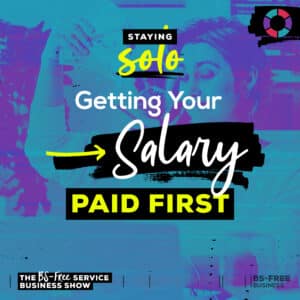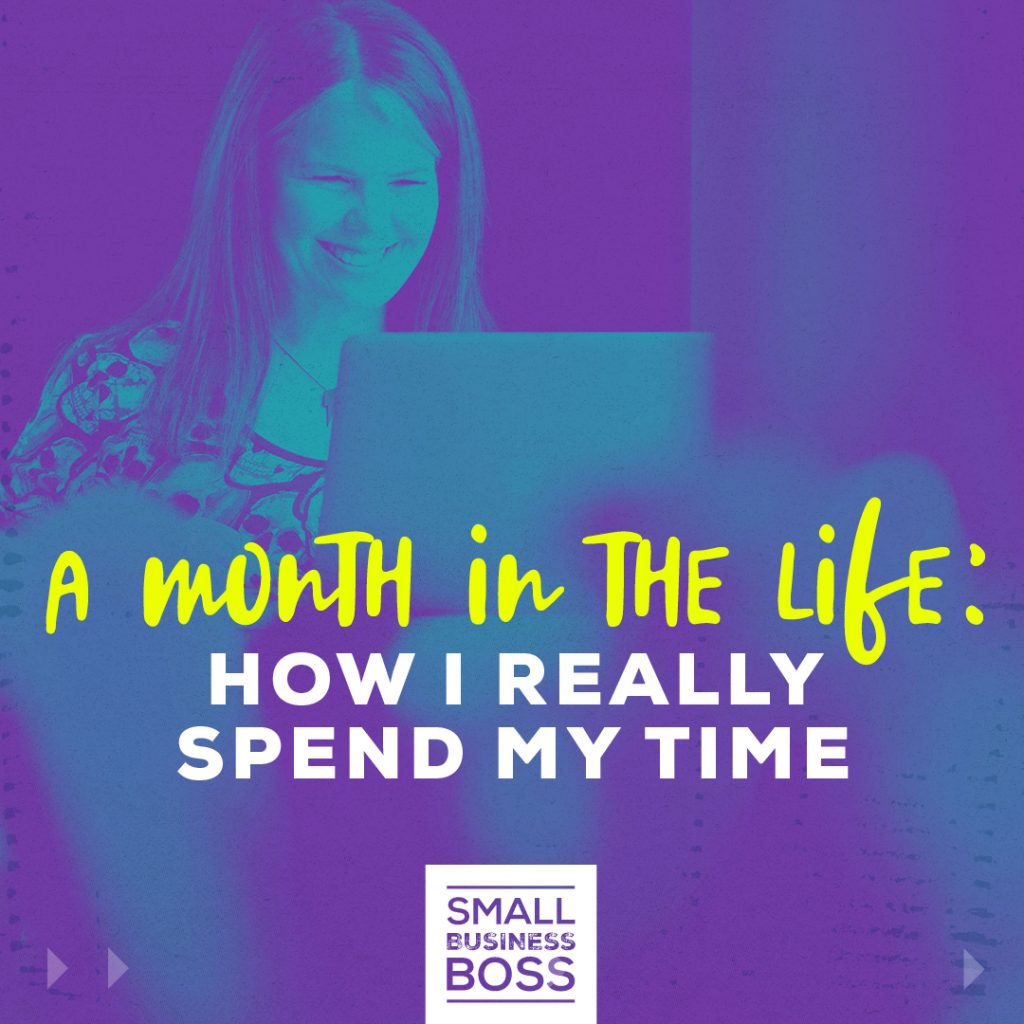
Search the site:
Episode 218: A Month in the Life: How I Really Spend My Time
A quick note about this episode: I originally recorded this podcast back in February as the deep dive episode for March. But then, Corona was upon us, and talking about how I spend my days seemed a little fluffy. As we head into summer, I decided it was time to dust it off and share it with you.
My best learning opportunities have always come from seeing how other people do things. You know, the real nitty gritty of what they’re doing, and not the shiny social media version. Which is what’s inspired me for this month’s deep dive that examines how I really spend my time.
I constantly get questions about how I’m spending my time as I balance running Scoop Studios, alongside Small Business Boss, and living my life to the fullest. Then there are the questions that are based on people trying to figure out how much time they should spend working on the business versus doing client work. And finally, there are the questions I get about how I can go to the lake in the Summer months, travel, run my life and read all the books.
For this deep dive, I chose to look at the month of January, as it’s a pretty typical month without any travel or other factors that would result in completely skewed data. Plus, January was a very average month, it was steady, but not over the top with too many things on the go, so it was an ideal month to look at.
All of these numbers in this post are based on my time logged in our invoicing and time tracking platform, Harvest. I’m fanatical about tracking my time, as it’s how we ensure client budgets are accurate and I’m making the best use of my time.
Now, let’s get into the deep dive.
Total Hours Worked in January 2020
January was definitely a long month with a lot of working days, but I kept my total work hours in check, working a total of 153.40 hours.
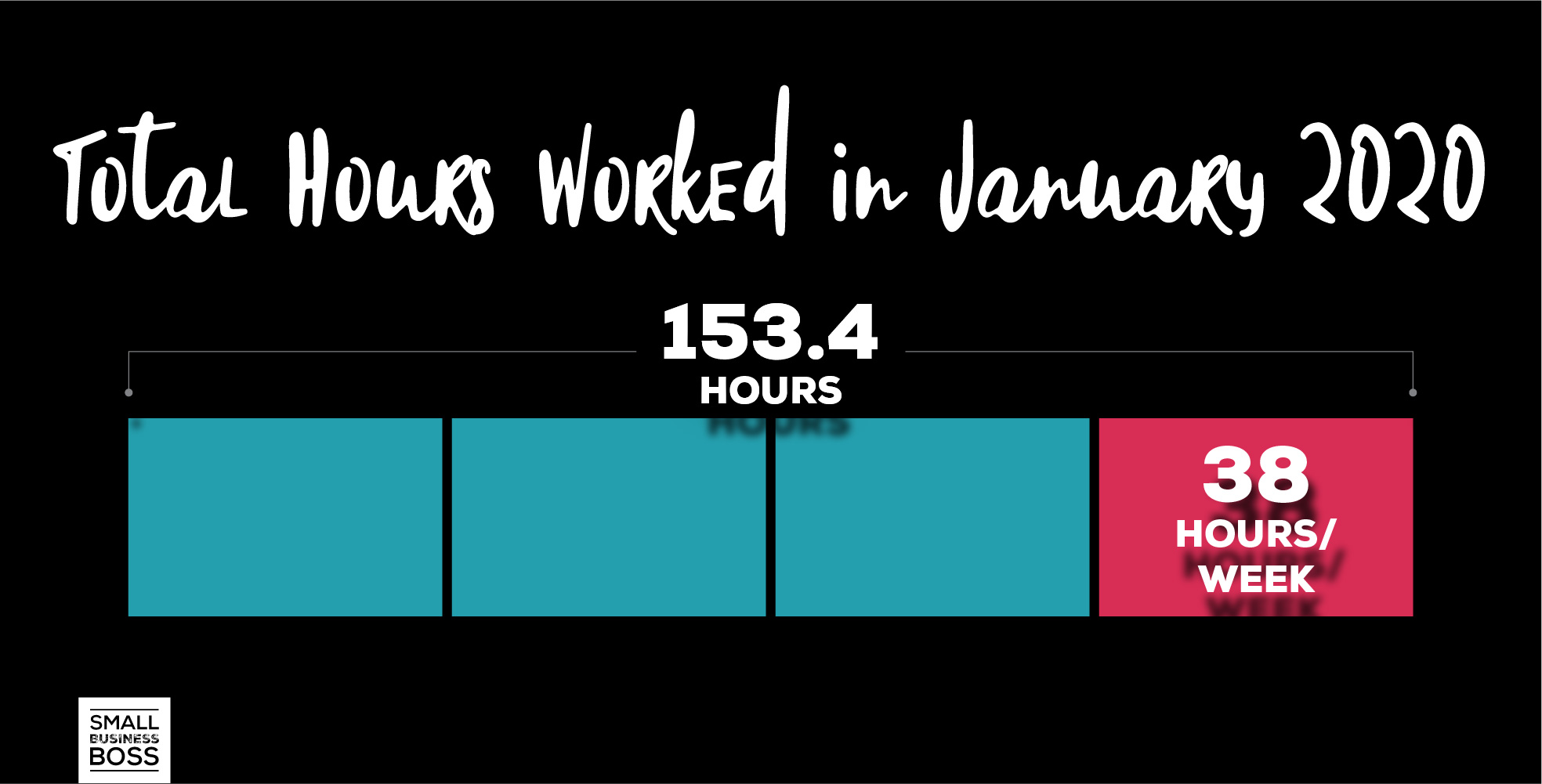
That was an average of 38 hours per week, which is bang on with my plan. My goal is to keep my work hours below 40 hours per week unless there’s a specific, intentional choice made to exceed those hours. Sometimes that’ll be an extra client project or an internal initiative, but I’ve learned that exceeding those work hours means other things in my life suffer, so I do my best to stick to it.
I’ll fully admit that for January and most of the winter, I struggle with my motivation (thanks SAD), but there’s also not much going on, so having a baseline of hours I’m aiming for per week helps keep me on track. During the Summer, I definitely cut my hours per week back, along with working shorter days and working fewer days per week. (Summer is fleeting in Canada, so I do my best to enjoy it!)
Billable Versus Non-Billable Hours
When you work with clients, balancing the time you spend doing client work versus working on the business can be incredibly challenging. Over the past seven years, I’ve gone from being between 80 to 90% billable, to where I am today.
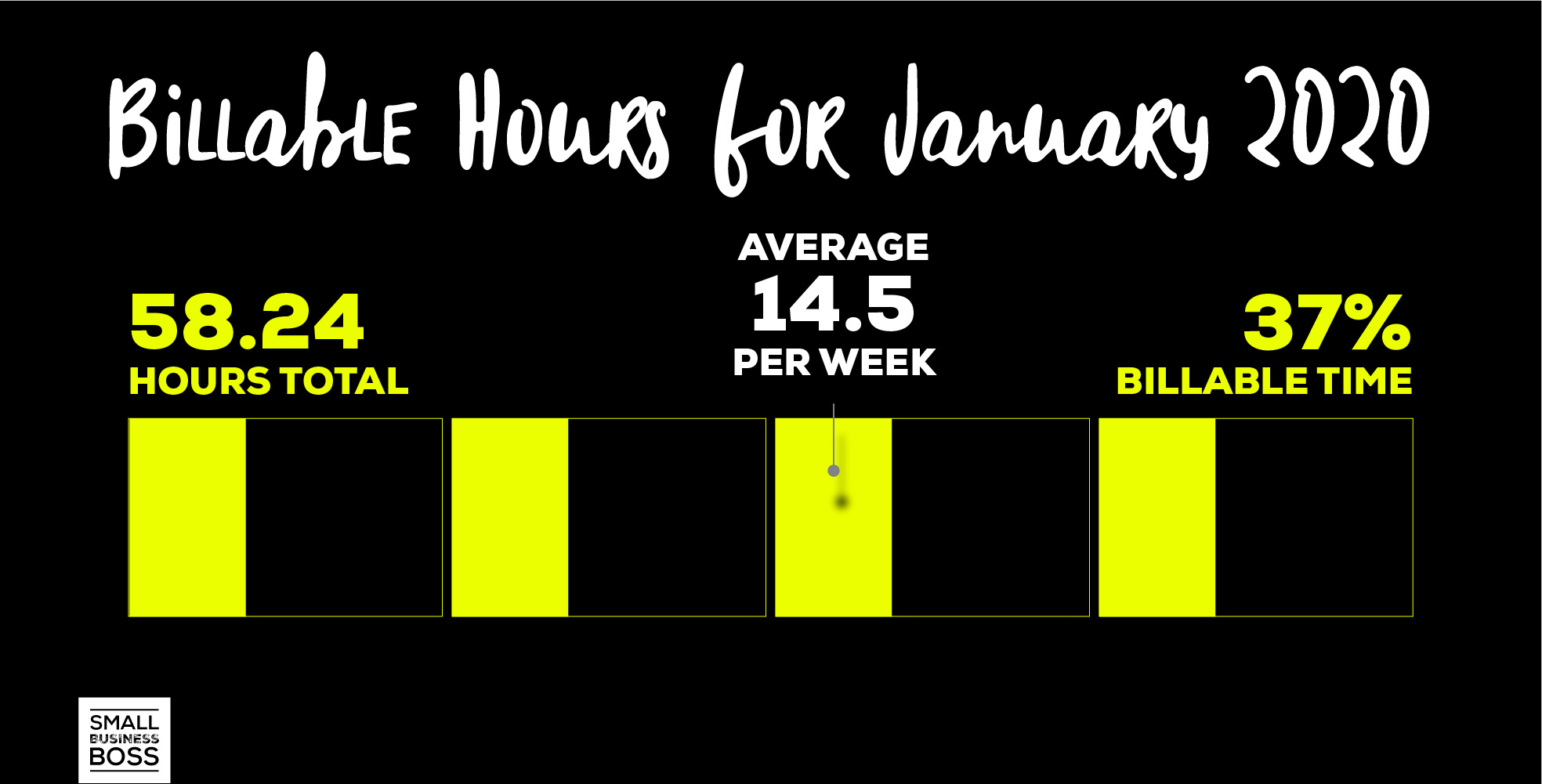
For January, I had a total of 58.24 billable hours, which was an average of 14.5 hours per week. That may seem low, but it’s a concrete illustration of how it’s possible to continue to grow your business without having to work night and day on client projects.
My billable hours were 37% of my total time worked in the month, and is a solid baseline I’m planning to stick to for most of 2020.
Benchmarking Against Q4 2019
Looking at a month really only gives you part of the picture, which is why I took a peek back at how I used my time in Q4. It’s worth noting that in that quarter, I had a fair bit of time off between vacation and closing the office over the holidays, but the numbers reinforce that January wasn’t an outlier.
Last quarter, I worked an average of 113.94 hours per month and 28.5 hours per week. Which makes total sense with my time off, as there were nearly four weeks out of 12 that I wasn’t in the office. 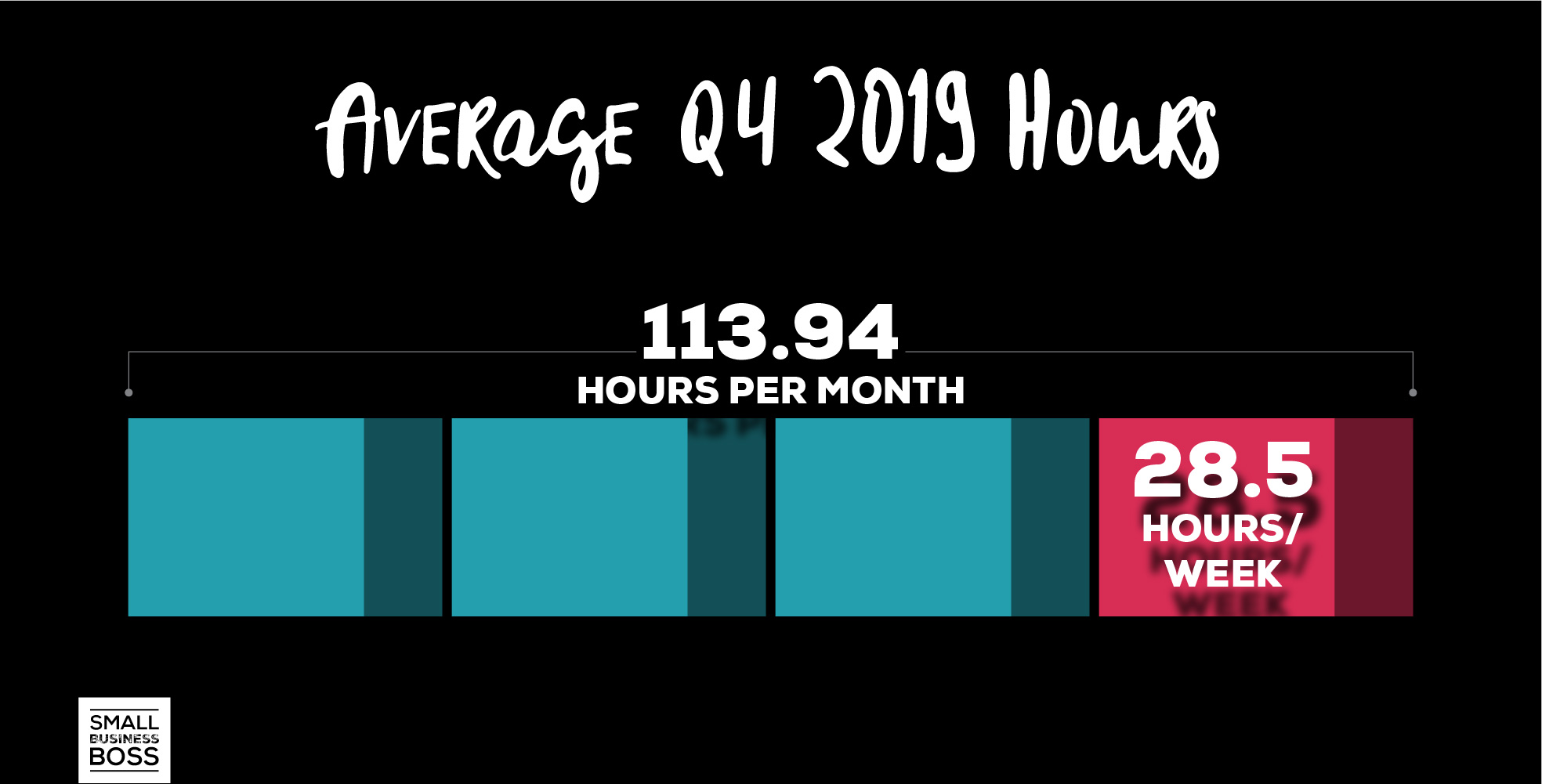
Interestingly, my billable hours were still fairly consistent, with an average of 10.5 hours per week, with my time being 37% billable. 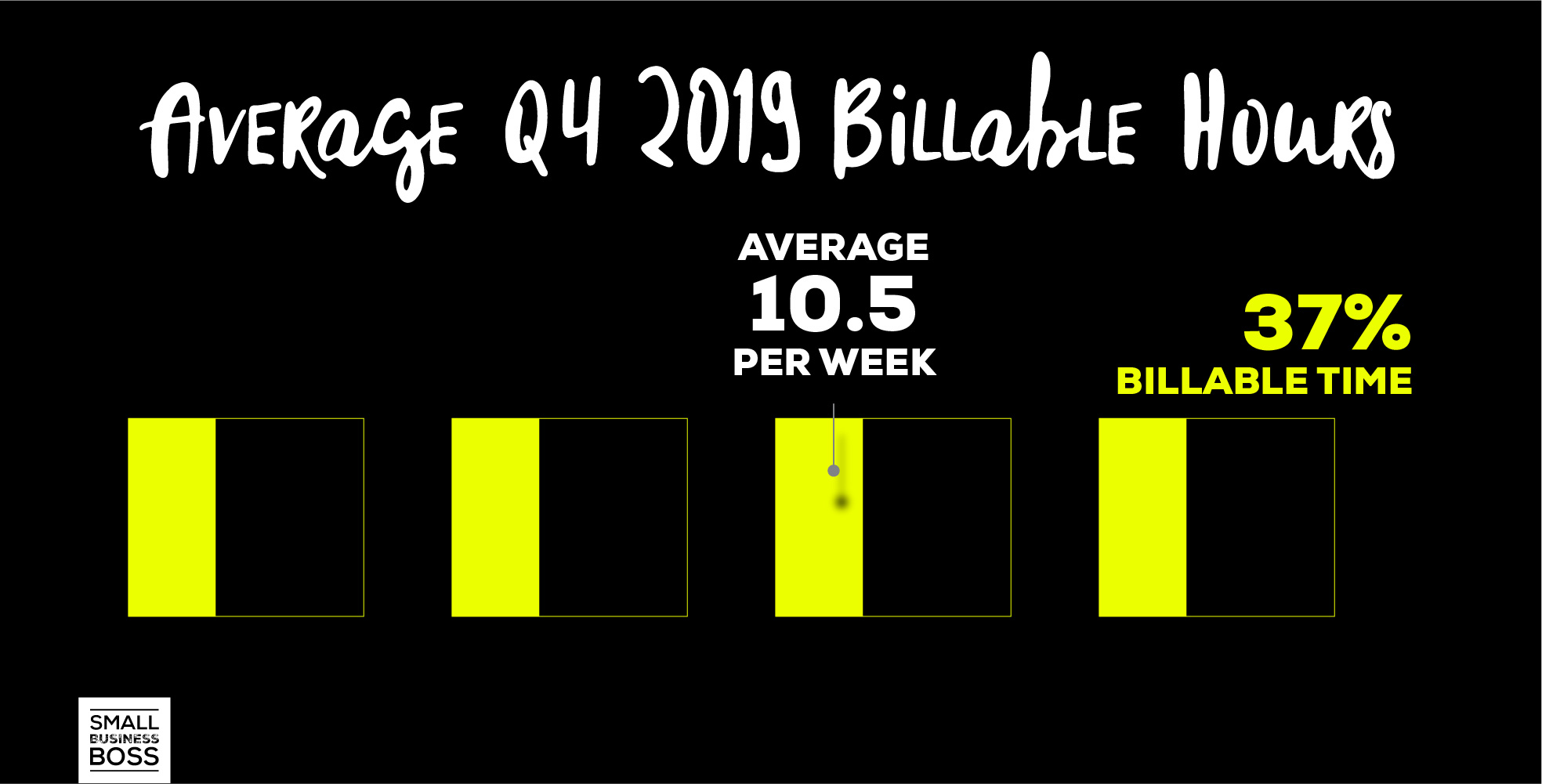
Scoop Studios vs. Small Business Boss Hours
As I mentioned earlier in this post, I get a lot of questions about how I manage to balance these two distinct and different businesses, which is actually a great question. It’s one I’ve struggled to fully answer for years, as I’ve had two different businesses (and at one point three businesses) since 2008. Basically, I don’t remember a time where I didn’t have two businesses on my plate and it’s something I’ve become very adept at handling.
For January, Scoop Studios was 71% of my time (109.15 hours), while Small Business Boss was 29% (44.25 hours). I average a minimum of 10 hours/week on Small Business Boss, and this month was no exception.
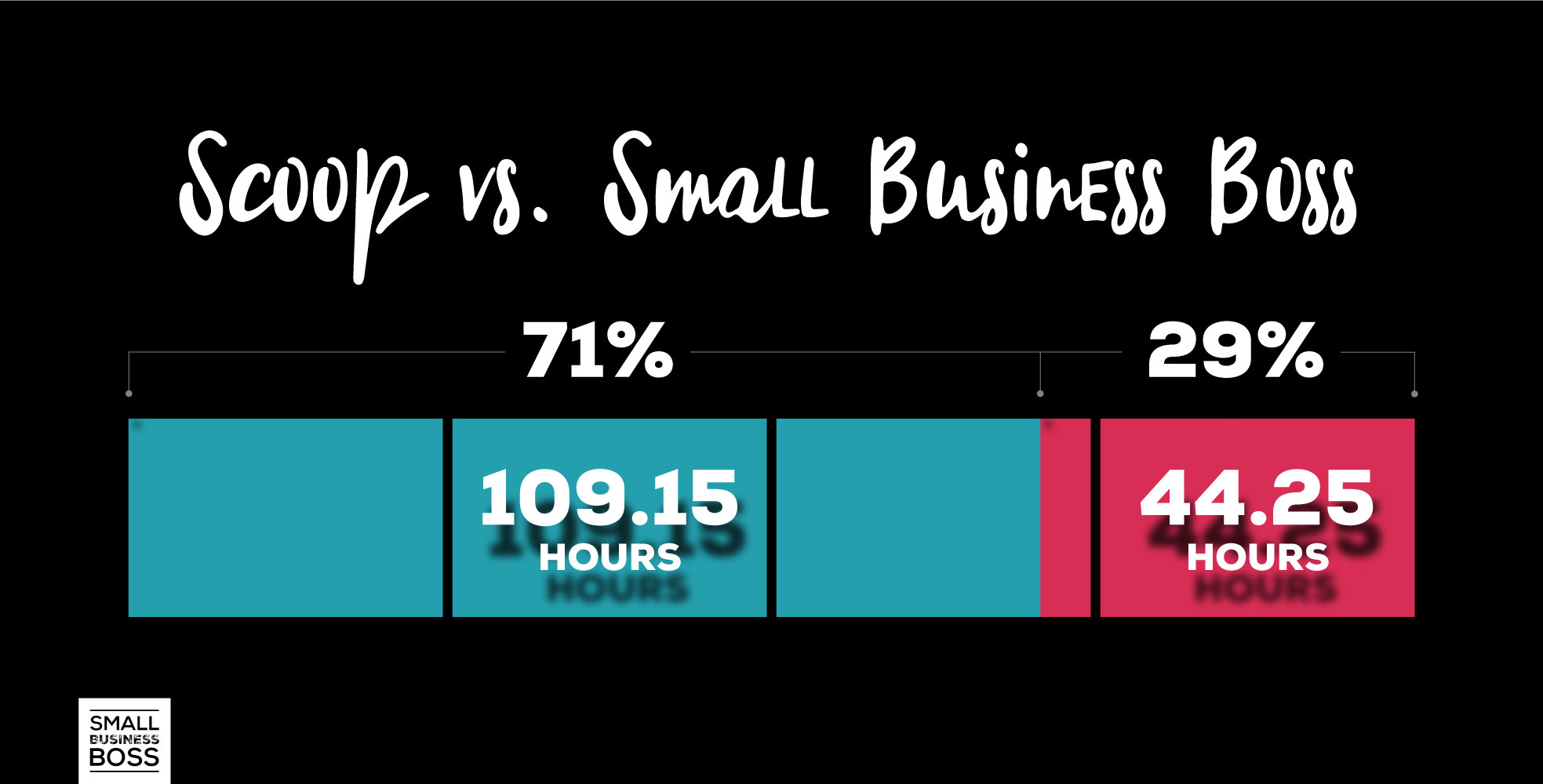
Scoop vs. Small Business Boss Hours
For Scoop, my time was broken down into 50.1 hours or 45.7% unbillable time, leaving 59.05 hours or 54.3% of billable time. Here’s how that non-billable time broke down:
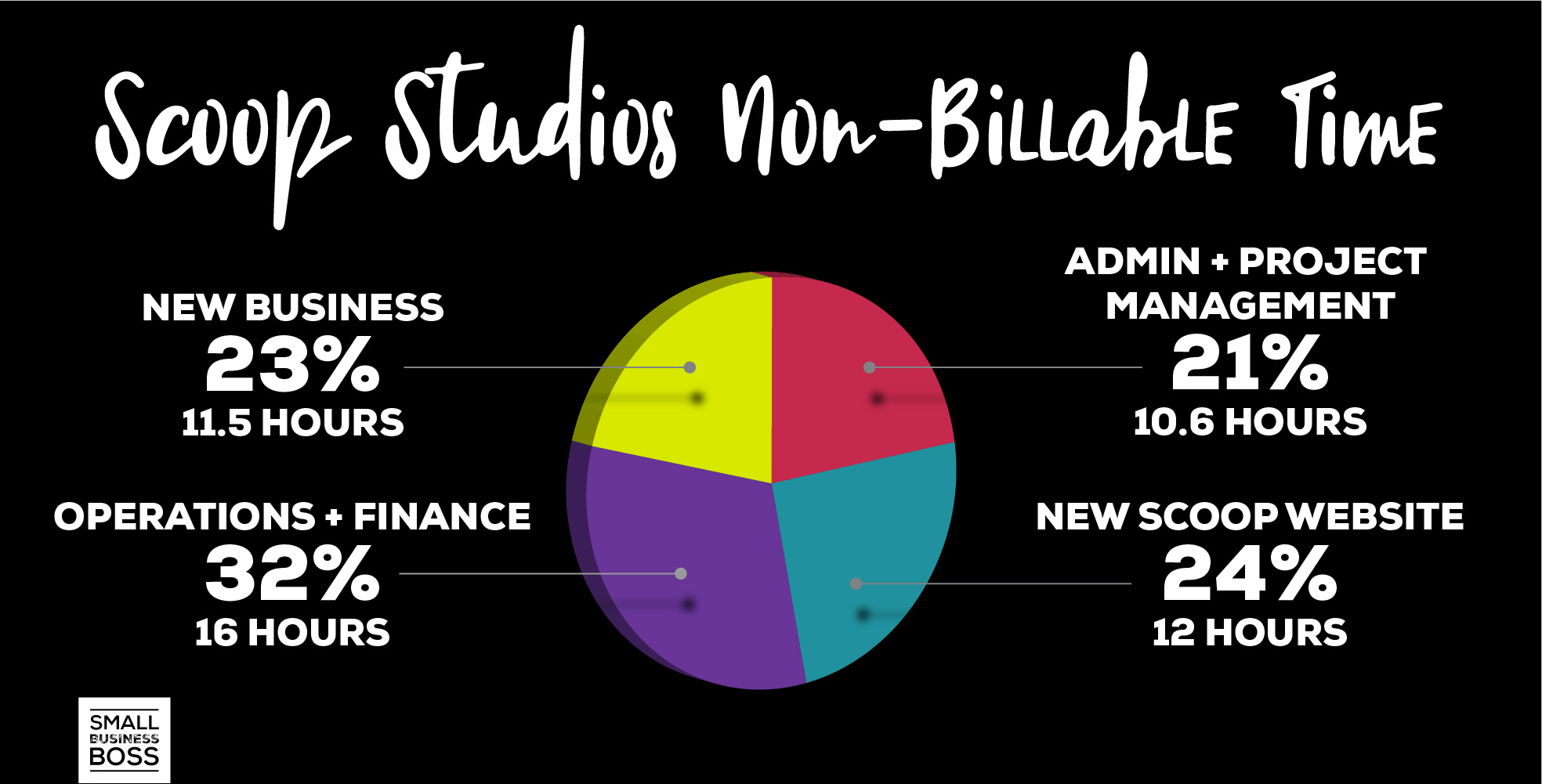
In looking at these numbers, my time spent on new business is definitely lower than normal, as a lot of that time was eaten up with work on the new Scoop Studios website. The two projects go hand-in-hand, so as soon as the site is live, I expect the new business activity to pick back up. (Especially as I know I’ve been holding off on some outreach until it was done, as well as getting more active by posting on Linkedin regularly.)
When I wasn’t working on running the business, my focus was on client work which includes: a mix of calls and communication with clients, setting editorial direction, reviewing and approving materials created by the team, and of course, creating content.
Also, in January, I spent much more time than normal on content creation as we had a project client with a time-sensitive writing project. I had the cycles in January to do this myself and I wanted to ensure we were in a position to respond quickly to make changes. I personally ended up logging over 23 hours on this project, with 14.5 hours spent heads down in a Google Doc writing website copy.
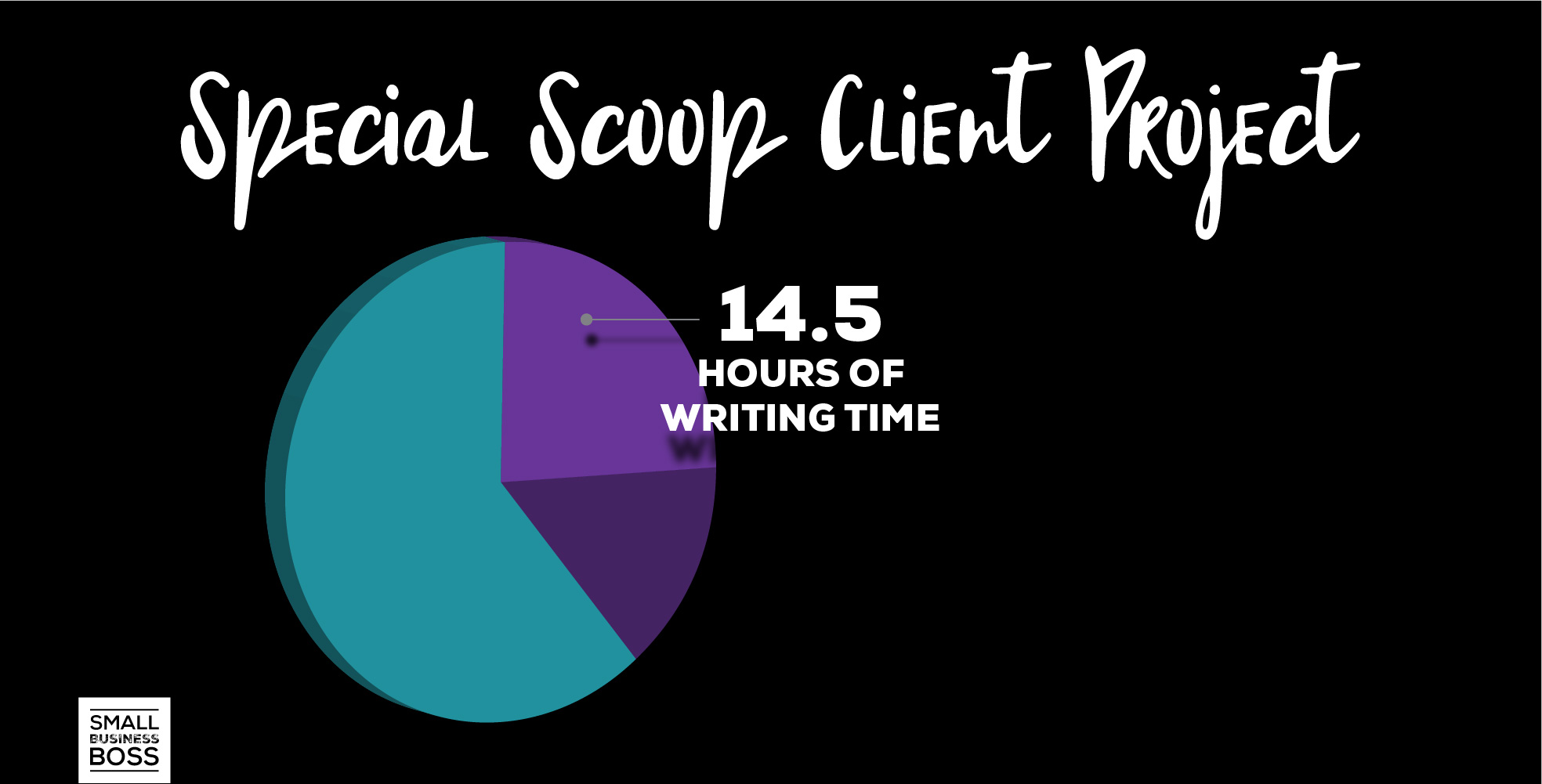
Finally, for my time with Small Business Boss, my time was divided between two main areas with 38% focused on the delivery of the Agency Mastermind, my year-long mastermind for agency owners, and the remaining 62% spent on marketing.
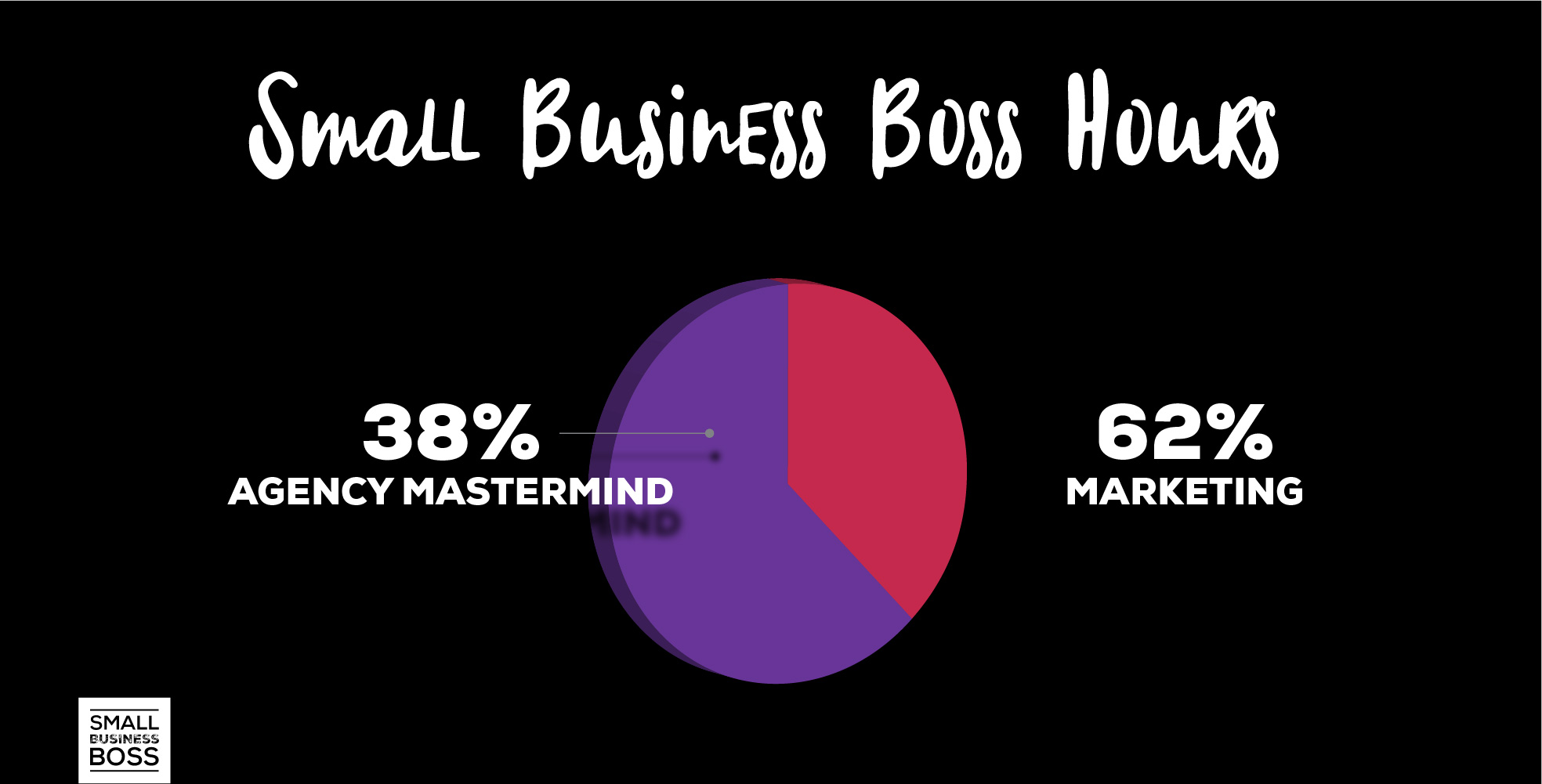
Marketing for Small Business Boss breaks down into podcast prep and recording, guesting on other podcasts, staying active on Instagram in and the Small Business Boss Facebook Group, and email marketing.
After revamping the mastermind for 2020, I’m excited to see this time breakdown. We’re only a month in, but I can see now how by serving fewer people, I have more time to figure out what’s next for Small Business Boss, while ensuring I’m able to give the 10 members of the 2020 cohort my absolute best.
What You Can Learn From My Time Tracking
After crunching and analyzing these numbers, I’m going to set aside more time on a monthly basis to review my own timesheets in detail and see what I can continue to learn.
In doing this analysis, I realized that I could likely shorten my workday a couple days a week (even in the Winter) by starting work later in the day. This is currently experimental, but compressing my work hours means I’m not falling into the trap of being butt in chair “working” if I don’t really need to be.
Also, as an agency owner, billable time = revenue, as well as the potential for overages and overservicing. By keeping a firm grip on my team’s time along with my own time, I have the insight needed to ensure our client work is on budget, and ultimately profitable in the long-run. As a team, we’re putting some additional reporting in place around project costs and utilization so we can continuously improve.
There’s a saying about “where your attention goes, the money flows”, and this exercise has reinforced how by using time tracking as a tool, I have what I need to focus my energy where it has the biggest impact.
If you’re wondering how to do this in your business, here are a few suggestions:
Track Your Time
It may seem tedious or like a waste of time, but it’s not. Having hard data around how much time you really work, how you spend your time, how much client work you’re really doing gives you an accurate snapshot of what’s really going on. At the Agency Mastermind Retreat last month, I must have recommended time tracking as the first step to getting clarity at least five times. And that’s because it works!
Set Targets for Your Time
You’re probably familiar with Parkinson’s Law, where “work expands so as to fill the time available for its completion”. When you don’t have firm limits on how much you’ll work, a plan for how long you’ll work each day, or even how much time you spend on non-billable work, it’s easy for things to get in the way.
Pick One
There are a lot of numbers I’ve shared in the post, and if you’re just getting started, this is simply too much data to try to collect. Start where you are and pick one thing to track. Two effective measures are how many hours you’re working per week or month, and how much time is billable versus non-billable. Picking one of those numbers gives you a proven way to bring awareness to how you’re really spending your time.
As I wrap this up, if you’re looking at this and feeling like I have everything figured out, I don’t. I still have weeks where I work too much, or projects don’t get touched because I’m unfocused. I’m far from perfect, but having structures and systems in place gives me some guardrails so I don’t completely crash and burn.
The real goal in examining how you spend your time shouldn’t be hyper-productivity or to do more, but instead to spend your limited time and energy in a way that helps you reach your business objectives. If there’s anything I learned when it comes to time, here’s no perfection, just consistent progress.
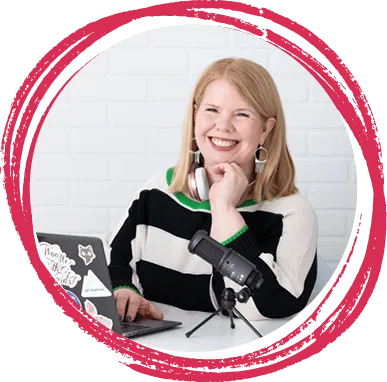
I’m Maggie Patterson (she/her), and services businesses are my business.
I have 20+ years of experience with client services, am a consultant for agency owners, creatives, and consultants, and vocal advocate for humane business practices rooted in empathy, respect, and trust.
Read or Listen to the Latest
For Solo Business Owners
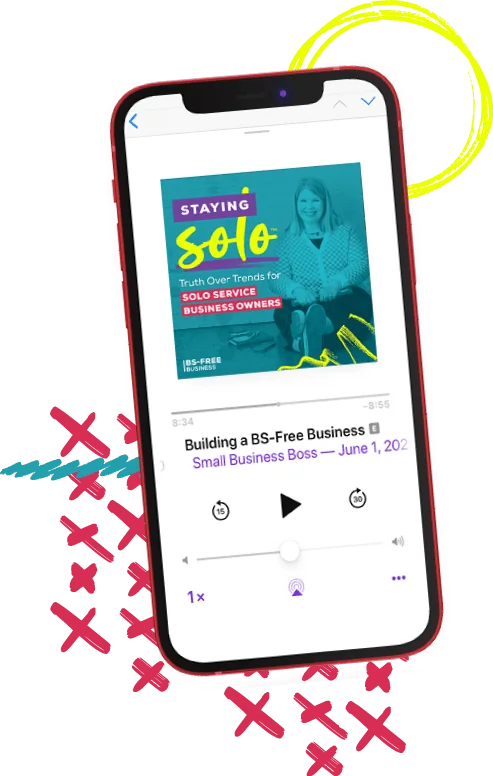
Growing a solo service business is tough.
It’s even harder when you’re bombarded with BS advice that steers you away from your values and why you started your business in the first place.
This is the podcast for solo creatives and consultants who want to remain as a team of one and have zero interest in the hustle and grind of typical business teachings.
Subscribe now and never miss an episode.
For Micro Agency Owners
Most podcasts for agency owners obsess over revenue growth as the ultimate success metric.
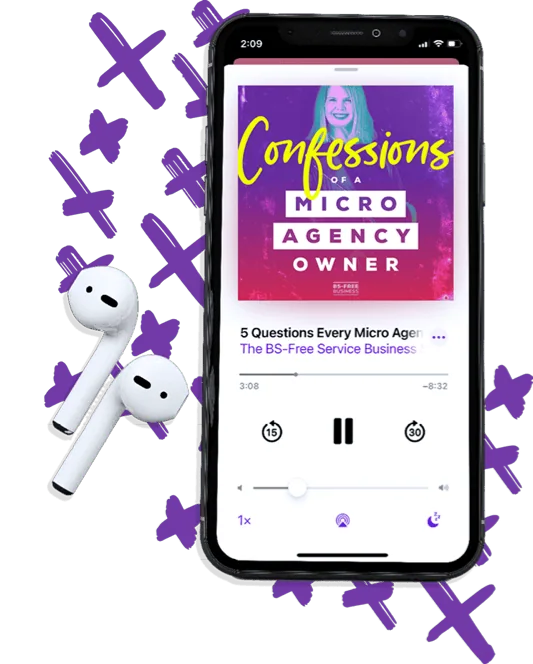
But here’s the truth: not everyone wants to make millions. Your goal might be to build a sustainable business that lets you have a life and doesn’t run you into the ground.
Join me as I spill my shameless confessions and share everything I’ve learned about building a micro agency that skips the BS of tired and typical agency teachings.
Follow Now on All Major Podcast Platforms




